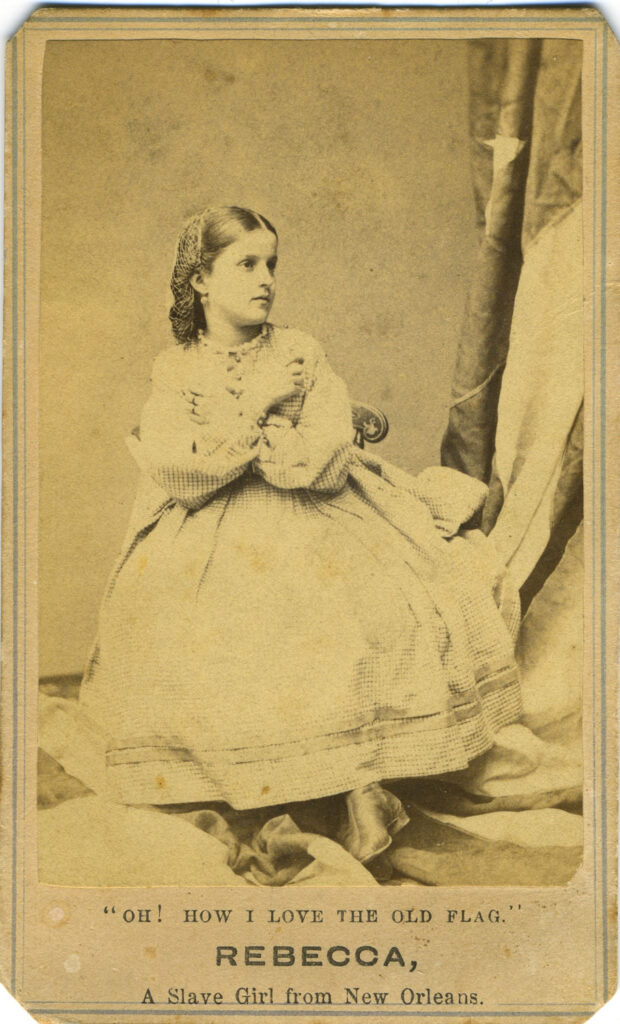Section #16 - Open warfare in “Bloody Kansas” follows fraudulent election wins for Pro-Slave State forces
Chapter 194: Kansas Voters Ratify The Topeka Constitution Banning All Blacks From Residency
December 15, 1855
Voting Confirms The Topeka Constitution And The Black Exclusion Clause
With the Wakarusa affair resolved, the Free State Party is ready to submit their Topeka Constitution to a vote, in line with their interpretation of the popular sovereignty procedures.

To An American Flag
Polling takes place on December 15, 1855, and this time it is largely peaceful as the Pro-Slavery Missouri men simply choose to ignore the event as irrelevant.
Two documents are voted on – first the Topeka Constitution itself, and second the “Black Exclusion” measure.
The Constitution is approved almost unanimously.
Topeka Constitution Voting
| Kansans: | # Ballots: |
| Approve | 1,731 |
| Disapprove | 46 |
Then comes the “Black Exclusion” vote, which would:
Ban Negroes and Mulattoes from settling within the state borders.
This vote is important because it indicates how many Kansans favor Free State status because of moral opposition to slavery versus on the basis of anti-black racism and/or simply self-interest as white men.
The margin here is closer, but still overwhelming – with voters choosing 3:1 in favor of cleansing their state of all blacks!
“Black Exclusion” Voting
| Kansans: | # Ballots |
| Approve | 1,287 |
| Disapprove | 453 |
This anti-black expression in Kansas is, however, not new. It follows the patterns set by prior constitutional debates in Ohio, Indiana, Illinois and California, and presages an even more legally entrenched ban in the state of Oregon.
It reveals that white American across the North fear and diminish black Africans with nearly as much zeal as their Southern brethren. As one Free Soil clergyman puts it:
I kem to Kansas to live in a free state and I don’t want niggers a tramping over my grave.
Furthermore, it signals the belief that the “black problem” belongs to the “Slave Power” states and should not be “carried” into the new territories out west.
It is the militia man, James Lane, who certifies the results and announces that the state will now be governed according to the new by-laws.
January 15, 1856
The Free State Party Then Elects Its Own Set of Legislators And State Officers
With their Topeka Constitution approved, the Free State Party goes on to elect a second Governor and Legislature for the Kansas Territory, designed to oppose the bogus rule of the Pro Slavers in Lecompton.
To do so, they hold a vote of January 15, 1856, administered across twelve polling places. This too is peaceful, as the Pro-Slavery opponents again ignore the voting as irrelevant – given that their “official” government is already in place.
The vote count for officers about matches that were recorded for the Topeka Constitution a month earlier. It comes in around 1700 in total, with most, if not all, actual residents of the state.
The winning candidate for Governor is Dr. Charles Robinson, originally an agent for Thayer’s New England Emigrant Society, then the force behind the founding of the Free State Party at Lawrence. Robinson enjoys a 3:1 margin over his nearest opponent, despite his reputation as an abolitionist.
Since the plan is to immediately apply for admission to the Union under the Topeka Constitution, the party decides to also elect its two proposed U.S. Senators and one U.S. House member at the same time. The choices for state Senator are the militia leader, James Henry Lane, and the ex-Governor, Andrew Reeder. Mark W. Delahay, a lawyer and newspaper editor from Leavenworth, is selected to represent Kansas in the U.S. House.
A full slate of state legislators is also elected and they soon convene to begin reversing the Pro Slavery laws passed by the ‘Bogus Legislature” at Lecompton. Their work continues until March 15, 1856, when they go into recess before a planned resumption on July 4, 1856.
Finally, James Lane is also chosen to head to Washington to present the Topeka Constitution to Congress, and lobby for the immediate admission to the Union.
With this much done, Kansas is left with two complete and antithetical sets of governments in place – a situation without precedent and one that cannot and does not endure.